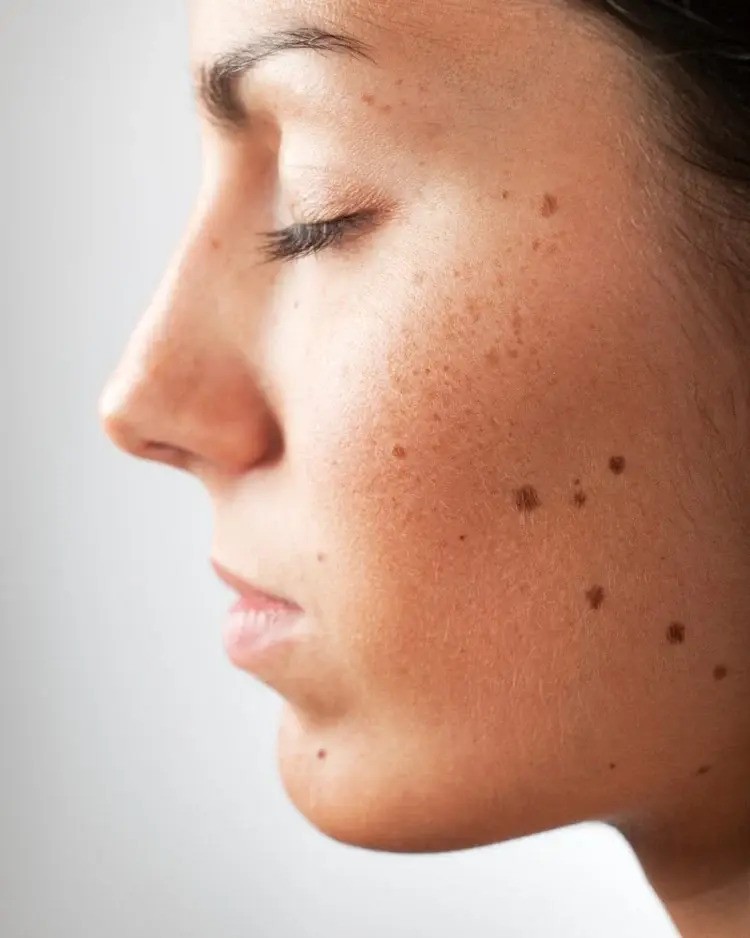Botox, or botulinum toxin, has long been celebrated for its cosmetic applications, but its therapeutic benefits, particularly for neurological conditions like dystonia, are equally transformative. *Dystonia* is a movement disorder characterized by involuntary muscle contractions, leading to repetitive movements or abnormal postures. These symptoms can be debilitating, significantly impacting daily activities and quality of life.
Enter Botox. By targeting and relaxing the overactive muscles, Botox injections can offer significant relief from the symptoms of dystonia. The process involves injecting small amounts of botulinum toxin directly into the affected muscles, which temporarily blocks the nerve signals that cause muscle contractions. This results in *smoother, more controlled movements* and a marked reduction in discomfort.
Many patients considering Botox for dystonia are concerned about what to expect after the injections. Understanding the post-treatment experience is crucial for setting realistic expectations and ensuring a smooth recovery. From the common side effects to recovery tips and long-term results, this guide will walk you through everything you need to know.
Curious about how Botox can help manage your dystonia symptoms? Book an appointment / free consultation or call 647-812-8752 for more info. Our team at Beauty O’Clock Medical Spa is here to support you every step of the way.
Immediate Effects After Botox Injections
After receiving Botox injections for dystonia, patients often wonder about the *immediate effects* they might experience. It's important to note that while Botox is highly effective, its impact is not instantaneous. The injected botulinum toxin takes time to work on the targeted muscles, and the full effects may not be visible immediately.
In the hours following the injection, you might notice some mild side effects that are generally short-lived and manageable. These can include:
- Redness and Swelling: It's common to experience slight redness and swelling around the injection sites. This typically subsides within a few hours.
- Bruising: Some patients may develop minor bruising, which can last for a few days but usually fades without intervention.
- Discomfort or Tenderness: The injection sites might feel tender or slightly uncomfortable, similar to the sensation after a vaccination.
Most patients can resume their normal activities shortly after the procedure. However, it's advisable to avoid strenuous exercises and activities that could increase blood flow to the treated areas for at least 24 hours. This helps to prevent the Botox from spreading to unintended muscles.
While these immediate effects are typically mild, it's essential to monitor your response to the treatment. Should you experience any severe or unusual symptoms, such as difficulty swallowing or breathing, it's crucial to seek medical attention promptly.
Understanding these immediate effects can help you prepare for what to expect after Botox injections for dystonia and ensure a smoother recovery process.
Common Side Effects and How to Manage Them

While Botox injections for dystonia are generally safe and well-tolerated, some patients may experience common side effects. Being aware of these potential side effects and knowing how to manage them can help you navigate the post-treatment phase more comfortably.
Here are some common side effects you might encounter:
- Headache: A mild to moderate headache can occur after Botox injections. Over-the-counter pain relievers, such as acetaminophen or ibuprofen, can help alleviate this discomfort.
- Muscle Weakness: The targeted muscles may feel temporarily weak as the Botox starts to take effect. This is usually a sign that the treatment is working, but if the weakness becomes bothersome, consult your healthcare provider.
- Flu-like Symptoms: Some patients report experiencing flu-like symptoms, such as fatigue, fever, or chills. Staying hydrated and resting can help mitigate these symptoms.
- Dry Mouth or Eyes: Botox can sometimes lead to dryness in the mouth or eyes. Sipping water frequently and using artificial tears can provide relief.
- Localized Pain: Pain at the injection sites can persist for a few days. Applying a cold compress to the affected areas can help reduce pain and swelling.
It's essential to follow your healthcare provider's post-treatment instructions closely. Avoiding alcohol, strenuous exercise, and lying down for a few hours after the injections can minimize the risk of side effects.
If side effects persist or worsen, don't hesitate to contact your healthcare provider for further guidance. They can offer additional tips or treatments to help manage any discomfort effectively.
By understanding and managing these common side effects, you can ensure a smoother recovery and maximize the benefits of your Botox treatment for dystonia.
Tips for a Smooth Recovery

Ensuring a smooth recovery after Botox injections for dystonia involves taking a few important steps. Following these tips can help you minimize discomfort and maximize the efficacy of your treatment.
Here are some expert-recommended tips for a smooth recovery:
- Stay Upright: For at least 4 hours post-treatment, avoid lying down or bending over. This helps prevent the Botox from migrating to unintended areas.
- Avoid Touching the Treated Area: Refrain from massaging or rubbing the injection sites for at least 24 hours to prevent the Botox from spreading to other muscles.
- Limit Physical Activity: Avoid strenuous exercise for 24 to 48 hours after your injections. Increased blood flow from intense activity can cause the Botox to spread, reducing its effectiveness.
- Skip Alcohol: Alcohol can increase the risk of bruising. It's best to avoid alcoholic beverages for at least 24 hours post-treatment.
- Apply a Cold Compress: If you experience swelling or discomfort at the injection sites, applying a cold compress can help reduce these symptoms. Be sure to wrap the cold pack in a cloth to avoid direct contact with your skin.
- Stay Hydrated: Drinking plenty of water helps in maintaining overall health and can assist in the body’s healing process.
- Follow Your Doctor's Instructions: Always adhere to the specific aftercare guidelines provided by your healthcare provider. They know your medical history and can offer tailored advice.
By following these tips, you can enhance your recovery process and enjoy the full benefits of your Botox treatment for dystonia. Remember, if you have any concerns or experience unusual symptoms, it's crucial to consult your healthcare provider promptly.
When to Expect Results

One of the most common questions patients have is when they can expect to see results after Botox injections for dystonia. Understanding the timeline can help set realistic expectations and ensure you monitor your progress effectively.
Generally, you may start to notice improvements in your dystonia symptoms within a few days after the injection. However, the full effects typically become apparent over a period of 1 to 2 weeks. During this time, the Botox gradually works to relax the overactive muscles causing your symptoms.
Here’s a more detailed breakdown of what to expect:
- First 24-48 Hours: You may not notice any immediate changes. It’s important to remain patient as the Botox begins to take effect.
- 3 to 5 Days: Some initial improvements might be noticeable, such as a slight reduction in muscle stiffness or spasms.
- 1 to 2 Weeks: This is when you will likely see the most significant changes. The targeted muscles should be more relaxed, leading to a noticeable decrease in dystonia symptoms.
- 3 to 6 Months: The effects of Botox can last for several months. As the Botox gradually wears off, you may notice a return of symptoms, signaling that it might be time for another round of injections.
It’s crucial to have realistic expectations and understand that individual responses to Botox can vary. Factors such as the severity of your dystonia, the specific muscles targeted, and your overall health can influence how quickly and effectively the treatment works.
If you have any concerns about your progress or if you do not see the expected results within the anticipated timeframe, consult your healthcare provider. They can provide additional insights and adjust your treatment plan if necessary.
Long-Term Benefits and Follow-Up Care

After receiving Botox injections for dystonia, patients often wonder about the long-term benefits and the necessity of follow-up care. Understanding these aspects can help you maximize the efficacy of your treatment and maintain optimal results.
Botox has been shown to provide significant relief from dystonia symptoms over the long term. Regular treatments can lead to sustained muscle relaxation, reduced discomfort, and improved quality of life. Here are some key long-term benefits:
- Consistent Symptom Management: With ongoing Botox injections, you can expect a steady reduction in muscle spasms, stiffness, and pain.
- Improved Mobility: Many patients experience enhanced mobility and a greater range of motion, making daily activities easier and more enjoyable.
- Enhanced Quality of Life: By alleviating the symptoms of dystonia, Botox can significantly improve your overall well-being and day-to-day comfort.
To maintain these benefits, it’s important to follow a structured follow-up care routine. This typically involves scheduling regular appointments with your healthcare provider to monitor your progress and adjust your treatment as needed. Here are some follow-up care tips:
- Regular Appointments: Schedule follow-up visits every 3 to 6 months, or as recommended by your provider, to ensure the continued effectiveness of the treatment.
- Track Your Symptoms: Keep a journal of your symptoms and any changes you notice. This information can help your provider tailor your treatment plan to your specific needs.
- Communicate Openly: Discuss any concerns or side effects with your healthcare provider. Open communication ensures that any issues are addressed promptly and effectively.
Following these guidelines can help you achieve the best possible results from your Botox treatment for dystonia.
Ready to experience the long-term benefits of Botox for dystonia? Book an appointment or free consultation or call 647-812-8752 for more info. Our experts at Beauty O'Clock Medical Spa are here to help you on your journey to better health and well-being.
